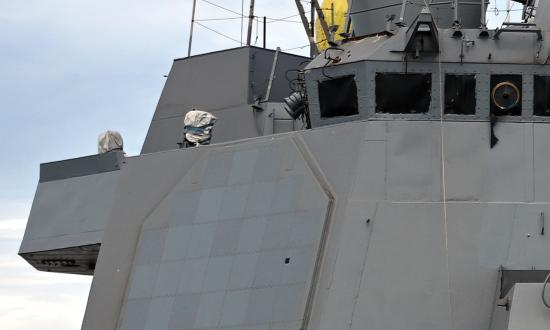Northrop Grumman’s Naval and Oceanic Systems group is implementing software changes and upgrades to the Navy’s Electronic Chart Display and Information System (ECDIS) The Navy will begin installing the system on board submarines this coming summer.
In September 2022, Naval Sea Systems Command (NavSea) awarded the company a $13.1 million contract for the ECDIS modifications and upgrades, which have been overseen by the Naval Surface Warfare Center’s (NSWC’s) Philadelphia Division. The company is doing the work at its Maritime Systems and Integration facility in Charlottesville, Virginia.
The system went through successful testing on board the amphibious assault ship USS Kearsarge (LHD-3) last August, with additional testing at NSWC Philadelphia. The Navy’s Operational Test and Evaluation Force (OpTEvFor) then approved ECDIS as “operationally suitable, operationally effective and cyber survivable,” and ready for fielding. In October, ECDIS was installed on the aircraft carrier USS Theodore Roosevelt (CVN-71).
The Navy plans over the next three years to install the system on as many as 115 surface ships, including in-service and new-construction frontline surface combatants, aircraft carriers, and amphibious ships, as well as Virginia-, Seawolf-, and Los Angeles–class attack submarines and Ohio-class missile boats.
Rudy Fernandez, Northrop Grumman’s director of Maritime Systems and Integration, says ECDIS is a software component of the company’s voyage management system within the Integrated Bridge System (IBS) now on all Navy and Military Sealift Command ships. The ECDIS software, he says, is common for both surface ship and submarine installations, although submarines lack the IBS. Fernandez says ships will get ECDIS during scheduled modernization and maintenance port visits.
The September 2022 contract award follows a September 2020 win for the company of a $27.7 million NSWC indefinite-delivery/indefinite-quantity award for a range of ship navigation support activities, including training, documentation, and technical services related to ECDIS, VMS, and IBS technology, as well as machinery control, steering, and propulsion control.
ECDIS was developed initially by Sperry Marine for commercial ships and is widely in service on such vessels. Sperry Marine started building the IBS in the mid-1990s for the Navy’s “Smart Ship” program. Northrop Grumman acquired Sperry in 2001 and refocused the company primarily on Navy and Department of Homeland Security work. The ECDIS tested on board the Kearsarge and approved by OpTEvFor is the first iteration of the system configured specifically for Navy use.
The company says the Navy ECDIS “processes and displays multiple chart formats, including digital nautical charts developed by the National Geospatial Intelligence Agency.” The system uses the ship’s navigation radar for route planning, automates the execution of route plans, and monitors navigation progress. ECDIS also performs chart analyses for hazard warnings when the ship is underway. The system is compliant with standards for interoperability with NATO navigation systems and cybersecurity requirements, the company says.
Northrop Grumman last June won a $12.2 million modification to a previously awarded NavSea contract for IBS shipsets for the Arleigh Burke–class modernization program, as well as new-build Flight III destroyers now under construction at Huntington Ingalls Shipbuilding and Bath Iron Works.
For many years, the company has built the Navy’s WSN-7/7A ring laser gyroscope inertial navigation system, which will be integrated with ECDIS. The WSN-7 is configured for shipboard use, while the WSN-7A uses a modified form factor to accommodate use on Los Angeles–, Seawolf-, and Virginia-class attack submarines. In October 2021, the company delivered its 500th WSN-7 to the Navy.
The company has started deliveries of a new ring laser gyro system, the WSN-12, which eventually will replace the WSN-7 on all surface ships and submarines.






